"A reality can hardly seem self-evident
if a person is simultaneously aware of a counter reality."
--Joan Emerson
Having considered matters of self, motivation, and affect, as well as how they interact with with setting, let's explore their bearing on behavior. For an example of what kind of theoretical model these processes entail, see Broadbent's "Personality, motivation, and performance."
![]() The range of our social interactions produces a wide
spectrum of connections with others, from the anonymous relations with
total strangers to the communal ties with certain others whose identities
become thoroughly intertwined with our own. Connecting with others is a
central biographical theme for all of us. According to James Q. Wilson
in The Moral Sense, "Just as Labradors are born to fetch, we
are born to bond." To appreciate the potency of these connections,
all that one needs to see is what happens when these ties are severed:
a spouse dies, one is fired or retired from
work, a close friend moves to another state, or one's
parents divorce.
The range of our social interactions produces a wide
spectrum of connections with others, from the anonymous relations with
total strangers to the communal ties with certain others whose identities
become thoroughly intertwined with our own. Connecting with others is a
central biographical theme for all of us. According to James Q. Wilson
in The Moral Sense, "Just as Labradors are born to fetch, we
are born to bond." To appreciate the potency of these connections,
all that one needs to see is what happens when these ties are severed:
a spouse dies, one is fired or retired from
work, a close friend moves to another state, or one's
parents divorce.
In Intimate Environment, Arlie Skolnick observes:
Paradoxically, individualism seems to foster not only a preoccupation with the self, but also an emphasis on close personal relationships. As Murray Davis (1973) observes, a preoccupation with friendship and love emerged during every period of urbanization in Western culture: in ancient Greece, in the Roman empire, during the Renaissance, and, most recently and extensively, since the eighteenth century. Without the traditional bonds of kinship and community, the urban individual must construct a more consciously chosen social life to replace the world that was lost (1992:239).
THE IMPORTANCE OF THE INITIAL BOND
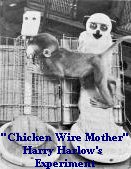 The social sciences, particularly psychology's
attachment theorists, have long postulated on the significance of the
first bond. The child's attachment with its mother has long been suspected
of being the bond upon which all eventual social bonds are based. Kennell
and Klaus (1972) showed that as few as 16 hours of close contact between
mother and infant immediately after birth produced better results on child
development scales as late as five years after. Investigations into the
drives of society's most deviant members invariably include stories of
dysfunctional families and abuse at the hands of those they, as children,
should have been able to count on most: the parents.
The social sciences, particularly psychology's
attachment theorists, have long postulated on the significance of the
first bond. The child's attachment with its mother has long been suspected
of being the bond upon which all eventual social bonds are based. Kennell
and Klaus (1972) showed that as few as 16 hours of close contact between
mother and infant immediately after birth produced better results on child
development scales as late as five years after. Investigations into the
drives of society's most deviant members invariably include stories of
dysfunctional families and abuse at the hands of those they, as children,
should have been able to count on most: the parents.
FRIENDSHIPS
WHEN BONDS DISSOLVE
![]()
 To be considered here is how individuals--these self-conscious creatures
of symbols who, among other things, seek meaningfulness, connections with
others, and esteem--interact, and how out of their interactions emerge
both personal and social order. Like the act of
driving, behaving in everyday life follows specified pathways (society
is, after all, but networks of patterned social activity) replete with
rules that are both written and unwritten. These rules, in part, require
a definition of self vis-à-vis other types of selves: are one's self performances
to directed toward a social superior or subordinate, a store clerk or a
friend, an intimate or a total stranger?
These rules assist interactants to anticipate others' behaviors and to
know how to respond accordingly. Hence we get upset with drivers who suddenly
and without warning switch into one's lane: they are in their own little
world, oblivious to their social surroundings, and fail to signal their
intents. Commonalities among "good drivers" (as measured by number
of accidents) involve both their giving appropriate signals to others and
their ability to correctly read (or assume) the intentions/motivations
of other actors.
To be considered here is how individuals--these self-conscious creatures
of symbols who, among other things, seek meaningfulness, connections with
others, and esteem--interact, and how out of their interactions emerge
both personal and social order. Like the act of
driving, behaving in everyday life follows specified pathways (society
is, after all, but networks of patterned social activity) replete with
rules that are both written and unwritten. These rules, in part, require
a definition of self vis-à-vis other types of selves: are one's self performances
to directed toward a social superior or subordinate, a store clerk or a
friend, an intimate or a total stranger?
These rules assist interactants to anticipate others' behaviors and to
know how to respond accordingly. Hence we get upset with drivers who suddenly
and without warning switch into one's lane: they are in their own little
world, oblivious to their social surroundings, and fail to signal their
intents. Commonalities among "good drivers" (as measured by number
of accidents) involve both their giving appropriate signals to others and
their ability to correctly read (or assume) the intentions/motivations
of other actors.
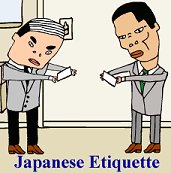 Social situations vary, of course. Our driver may find himself on
the roads of a foreign country with traffic going in directions opposite
to that in the United State, with unintelligible signs and customs. Such
are the experiences of immigrants and foreign travelers in everyday life.
Or one may be in competition on the Indianapolis 500 race track, where
the goal is not going from point A to B but rather to reach a waving checkered
flag first. In addition to requiring definitions of self, the rules which
channel social behavior require interactants to have a shared definition
of the situation.
Social situations vary, of course. Our driver may find himself on
the roads of a foreign country with traffic going in directions opposite
to that in the United State, with unintelligible signs and customs. Such
are the experiences of immigrants and foreign travelers in everyday life.
Or one may be in competition on the Indianapolis 500 race track, where
the goal is not going from point A to B but rather to reach a waving checkered
flag first. In addition to requiring definitions of self, the rules which
channel social behavior require interactants to have a shared definition
of the situation.
As complicated as all of this sounds, most of the time we basically
run on automatic, like mindlessless
traversing the same roads at the same time day in and day out. In some
social settings, however, individuals become conscious of these frameworks
that define their interactions with other people: there might be defining
props, such as stained glass windows conveying religious messages, or environmental
constraints, such as the zig-zagging roped-in waiting lines at Disneyland.
In other settings, individuals can become increasingly self-conscious of
themselves, as when
one has an audience evaluating one's performance such as when our driver
is a 16-year-old taking a driving test with a state examiner sitting in
the passenger seat.
DEVIANCE & SOCIAL CONTROL
Crime in the
According to at least one 1990s survey, more than 9 in 10 Americans say that they lie regularly. While some social critics interpret this as a symptom of living in a culture of lives, all evidence points to the universality of the activity.
Some sociobiologists argue that the human brain evolved with the complexity that it did, in part, because this primate had to deceive and to detect deception in order to survive and pass on its genetic code in its elaborate social environment. In other words, the absence of trust requires individuals to become skilled lie detectors. However, research by Paul Ekman indicates that we are quite inept.
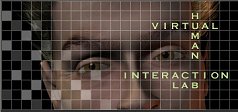 Marc A. Smith and others at Microsoft are engaged in some fascinating analyses of our electronic
interactions and the new social structures being formed. At the 2001 annual meeting of the ASA, he presented
"Data Mining Social Cyberspaces" using information derived from his newsgroup
tracker.
Marc A. Smith and others at Microsoft are engaged in some fascinating analyses of our electronic
interactions and the new social structures being formed. At the 2001 annual meeting of the ASA, he presented
"Data Mining Social Cyberspaces" using information derived from his newsgroup
tracker.
Each semester Trinity's Social Psychology class breaks into several groups to research a particular phenomenon and to produce collective projects. During the Fall of 2002 we focused on the supposed rise of the American culture of rudeness.
Within weeks of the national unity and shared civilities experienced immediately after 9-11, there appeared media claims of growing rudeness in American society. In April 2002, a poll by Public Agenda was released reporting how nearly 8 in 10 Americans believe that the lack of respect and courtesy is a serious problem, with 6 in 10 perceiving the problem is getting worse and 4 in 10 confessing that they themselves were sometimes part of the problem.
Examples:
So what accounts for such phenomena: different type of personalities or different types of
social settings? For instance, do modern
self-systems no longer come with the checks on personal
incivility that earlier models had? Do people find themselves thoughtlessly acting rudely even if they
did not intend to? Might the rudeness impulse be historically constant and what
we’re witnessing nowadays is the failure of traditional social checks (i.e., public embarrassments inflicted on those who act rude) on such behavior?
Or perhaps might the degree of rudeness be historically constant and
people nowadays are simply more sensitive to snubs and disses? Or, because of the
speed of technological change, the human primate (who shares 98+% of its genes
with chimps) now finds himself in novel contexts for which he has not been
genetically hardwired to cope with. How
well does a chimp cope with rush hour in LA? Let's line up the (usual) suspects:
Unlike the good
old days of the cold war when we feared the Reds, now we fear each other. We lock ourselves into gated communities in
homes filled with alarms and motion detectors (Joan Ryan, “Too panicked to live,” But have things
really changed? How do we know? In fact, there may not have been any real
Golden Age of etiquette, according to Mark Caldwell’s A Short History of
Rudeness and C. Dallett Hemphill’s Bowing to Necessities: A History of
Manners in The group studies:
"If men define situations as real, they
are real in their consequences." Interpersonally, defining
the situation is the matter of whose perspective frames the way in which social
phenomena are collectively perceived (or ignored) and understood (both
cognitively and emotionally). In terms of gestalt,
involved in framing is determining which social elements (which may be material
objects, individuals, values, or beliefs) are to be conceptualized as being
related and how: e.g., kin vs. non-kin, ally vs. foe, good vs. evil, just vs.
unjust, sacred vs. profane, and mine/ours vs. others. Framing
involves both differentiating figure
from ground (which, according to Maurice Merleau-Ponty, is how meaning is assigned) and thesis from antithesis. Experimentally, for instance, say a researcher gives two
groups 15 objects and tells each group to create 3 or 4 categories by which
these objects can be sorted. Each group, however, is given a different
sorting principle (i.e., sort in terms of their composition [e.g., metal, wood,
..], their use, meaning, etc. Then have the audience try to guess and
employ the classification's organizing principle.
Given the significance of controlling the dominant
gestalt- ordering frameworks of social life, it is not surprising that
groups routinely compete to dominate these definitions of situations.
Political regimes, for instance, may attempt to impose a frame through disinformation
campaigns, propaganda, music (which can create desired collective emotions), and
the substance of school curriculums. In
fact, a label has emerged for those whose work is to reframe possibly damaging
political occurrences: spin doctors. George Zito notes in The Death of Meaning (Praeger, 1993):
Ideologies are attempts to impose definitions favorable
to the group or camp espousing them. Once such definitions are imposed
they need not convince anyone of their "truth" or "reliability."
They have consequences by virtue of their mere expression and latent appeal
to the frustrated individual. Indeed, only the "true believers"
believe these definitions are "true" and are taken for granted.
(pp. 117- 8) For instance, consider the following illustrations:
These issues of framing and defining situations brings
up the matters of social power and influence. Shared "realities"
exist because some groups have more power than others, meaning that they
are able to impose their belief systems and behavioral scripts over the
less influential. Related resources: Mental
Health Net's "How dependent are we? What makes us so dependent?"--an
overview of compliance and obedience with focus on individual-level predispositions
"Nobodies don't get booed." Many individuals are a tad uneasy in this era of video and movie
cameras. Perhaps your father is continually pointing the camera at you
and telling you to do something for the family anthology. You do something
stupid, and for years afterward you cringe in embarrassment every time
the tape is shown. In fact, the spectators of that captured moment may
eventually include people you did not know at the time, such as new friends,
one's future spouse, and perhaps even your children. Why does one often feel awkwardness when one knows that one is being
videotaped? Aren't other people always watching us and remembering what
they see and hear? This is so, but the "video clips" that others
have of you might be recorded over by subsequent events. In any case, the
tapes are edited by perception and memory and are easily distorted. Unlike the traditional photograph, the recorded self is accountable
not only visually but auditorily, and over considerable periods as opposed
to a fraction of a second. (This has had an interesting effect on the political
process. Candidates, realizing that every utterance may be captured and
available for replay if their actions veer from what they promise, have
become more self-conscious, more guarded, and perhaps less willing to take
chances.) We take on faith that what we see on television is fact, not
some memory and interpretation by an eyewitness. So when we see and hear
ourselves as others do--without the thoughts and feelings that, for us,
were also part of the recorded situation--an uncomfortable detachment occurs.
We see, for instance, how little of ourselves really "gets through,"
how little of the self-image that we thought we were transmitting was really
being conveyed. By watching ourselves on television, we see the normally
invisible qualities of ourselves: We did not appreciate how many "uhs"
and "ums" had infected our speech; we did not know that we made
so many goofy gestures and facial expressions when we talked; we did not
know that this was the self that we were presenting to others.
More significantly, impression management is a function of social
setting. Erving
Goffman portrays everyday interactions as strategic encounters in which
one is attempting to "sell" a particular self-image--and,
accordingly, a particular definition of the situation. He refers to these
activities as "face-work." Beginning by taking the perspective
of one of the interactants, and he interprets the impact of that person's
performances on the others and on the situation itself. He considers being
in wrong
face, out of face, and losing face through lack of tact,
as well as savoir-faire (diplomacy or social skill), the ways
a person can attempt to save face in order to maintain self-respect,
and various ways in which the person may harm the "face" of others
through faux pas such as gaffes or insults. These conditions occur
because of the existence of self presentational rules. These rules, in
turn, are determined by how situations are defined. For instance, there
is greater latitude in social situations than in task-oriented situations.
Situations also dictate available roles and how much self-importance people
can sustain. In our post-industrial context, increasingly the work we do involves
not only the manipulation of information but strategic interactions with
others. With the expansion of the service sector has emerged a self-marketing
industry. By the mid-1980s, the 1970's Winning by Intimidation had been
replaced by winning through common courtesy, evidenced by the rise of etiquette
consultants for corporate executives. Not surprisingly, increased self-consciousness
has resulted, leading to greater caution and lesser spontaneity in everyday
interactions. Also emerging on the social landscape are increasing numbers
of a new social creature: social chameleons who strive to make the best
impression they can in every situation (see Mark Snyder's Public Appearances,
Private Reality and The Many Me's of the Self-Monitor). Clothes make the man. Naked people have
little
or no influence in society. As developed in our discussions of the body self, clothes make the person.
Here, in the context of presentations of self, we consider how clothing
communicates individuals' positions within status hierarchies and their claims
to social power and the deference of others. Clothing also can carry
political messages, such as when Gandhi
pushed the production of unrefined
cloth, or khadi,
to symbolize the idea of Indian swadeshi, or self-reliance
The notion of reputation
sheds further light on both how situations are framed and the social bases of identity. A
reputation involves others' shared image of an individual and its associated esteem.
Reputations, whether good or bad or deserved or not, filter how others interpret one's self
presentations. Acts of kindness of a reputed SOB are, for instance, interpreted differently than
are the same acts performed by a religious missionary. Enter matters of
sincerity and deception, whether others "buy" one's performance. And from the
perspective of one who knows his or her reputation, we can see how reputations can determine
the range of selves that our actor can present to others, such as the presentations one must give
to preserve one's "good name" or to restore a positive
reputation that previously had been "lost."
It is certainly in the interest of universities to increase the bonds
between their students. Consider the ways in which your college or university
attempts to amplify the interpersonal attractions of its undergraduate
population. Here at Trinity University we find: Thus far in these pages we have considered how social behavior develops
through the processes of cognition and motivation; how perhaps the deepest
human motivations are the needs for attention and respect; how symbolic
systems shape cognition, anticipation, and history; and how individuals
manage their presentations of self to make their claims on the distribution
of attention and power between individuals. However, these personal processes are interwoven with processes that
are more collective in nature. Think, for instance, about the proportion
of your activities that are determined by groups. Your presence in this
very course was made possible because of a group we call an organization.
It is this group determines your role and that of your instructor, as well
as the vast proportion of our activities during the academic year. In addition,
the time you spend writing a letter home is a product of your membership
in another group we call a family. Observe that even when you are not physically
within a group how you can still carry your membership within your head--often
our behavior is oriented toward our reference groups. In sum, it can be
argued that most of our activities are group-based. We are linked to groups
through the roles that we play and the essence of these roles is not so
much determined by personality attributes of the role occupant but rather
by the nature of the group. Further, definitions of situations are typically
made by groups, as are personal motivations (whereas much of the adult
population is pecuniarily motivated, students work for a letter of the
alphabet!).

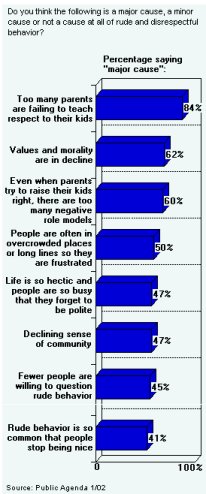
DEFINING THE SITUATION
--W. I. Thomas ![]() Enter matters of social power, such as
the gift of imposing: how authority is obtained over how a situation is
to be defined. Unless agreed upon, performances cannot unfold. (I recall
several weekend days when my young sons would throw tantrums unless a friend
could come over and then, when the much awaited-for friend arrived, spending
entire afternoons debating what they should do.) In sum, how things are
"framed" (defined by Erving Goffman in Frame Analysis
as "schemata of interpretation" that enables individuals "to
locate, perceive, identify, and label occurrences within their life space
and the world at large" [1974:21] ) determines how they are to be
interpreted. Once a situation is defined and perceived as real,
as W. I. Thomas observed, it becomes real in its consequences: it becomes
a "self-fulfilling prophecy."
Enter matters of social power, such as
the gift of imposing: how authority is obtained over how a situation is
to be defined. Unless agreed upon, performances cannot unfold. (I recall
several weekend days when my young sons would throw tantrums unless a friend
could come over and then, when the much awaited-for friend arrived, spending
entire afternoons debating what they should do.) In sum, how things are
"framed" (defined by Erving Goffman in Frame Analysis
as "schemata of interpretation" that enables individuals "to
locate, perceive, identify, and label occurrences within their life space
and the world at large" [1974:21] ) determines how they are to be
interpreted. Once a situation is defined and perceived as real,
as W. I. Thomas observed, it becomes real in its consequences: it becomes
a "self-fulfilling prophecy."
"REALITY" AS A SOCIALLY-CONSTRUCTED
PHENOMENON
MATTERS OF SOCIAL
INFLUENCE
CLASSIC EXPERIMENTS IN OBEDIENCE
AND THE POWER
OF SITUATIONS

PRESENTATIONS OF
SELF
--Reggie's Observation 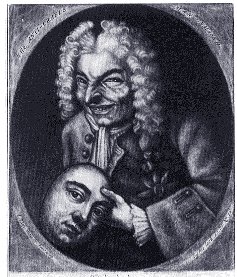 People continually attempt to manage their self-image. (It's worth
noting how the word person derives from the Latin persona, meaning
mask.) Teenage girls
and boys, for instance, spend considerable time fixing their image so as
to be appealing to others-- perhaps assuming others will give them the
attention that they give themselves. Through designer jeans, serious expressions,
gestures, joking behavior, and other devices, we present images of ourselves
that we wish others to accept and to respect. With cosmetics, veils, sunglasses,
and beards, we mask all or part of ourselves either to disguise ourselves
or to compensate for feelings of powerlessness.
People continually attempt to manage their self-image. (It's worth
noting how the word person derives from the Latin persona, meaning
mask.) Teenage girls
and boys, for instance, spend considerable time fixing their image so as
to be appealing to others-- perhaps assuming others will give them the
attention that they give themselves. Through designer jeans, serious expressions,
gestures, joking behavior, and other devices, we present images of ourselves
that we wish others to accept and to respect. With cosmetics, veils, sunglasses,
and beards, we mask all or part of ourselves either to disguise ourselves
or to compensate for feelings of powerlessness. YOU ARE WHAT YOU WEAR
--Mark Twain
REPUTATIONS
![]()
CREATING COLLECTIVE
BONDS:
THE CASE OF SCHOOL SOLIDARITIES
Avoiding Columbines
![]()
GROUP DYNAMICS
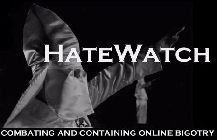 Hatred toward members of perceived out-groups is a powerful source
of in-group solidarities. Times of economic and political uncertainty spawn
various hate groups, attracting individuals, often young adults, who feel
left out of the mainstream and who feel to be in possession of some absolute
truth. While other countries may have their Fundamentalist religious zealots,
in the United States such extremism is more often bred by economics and
politics. Here potential targets for dehumanization--African-Americans,
Asian-Americans, Jews, Catholics--are more numerous because of the heterogeneity
of the American Melting Pot. Click here to see state
lynching rates 1882- 1927.
Hatred toward members of perceived out-groups is a powerful source
of in-group solidarities. Times of economic and political uncertainty spawn
various hate groups, attracting individuals, often young adults, who feel
left out of the mainstream and who feel to be in possession of some absolute
truth. While other countries may have their Fundamentalist religious zealots,
in the United States such extremism is more often bred by economics and
politics. Here potential targets for dehumanization--African-Americans,
Asian-Americans, Jews, Catholics--are more numerous because of the heterogeneity
of the American Melting Pot. Click here to see state
lynching rates 1882- 1927.

![]()